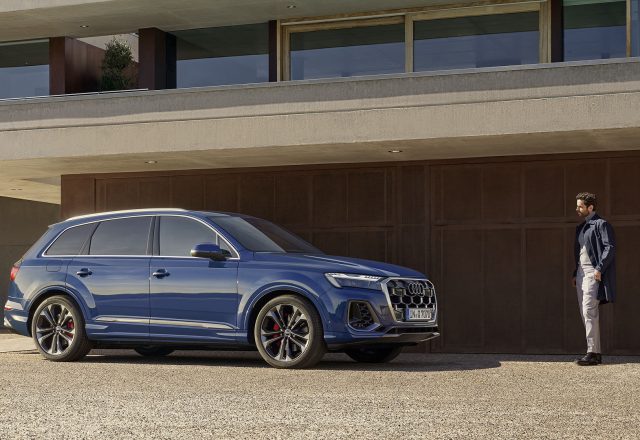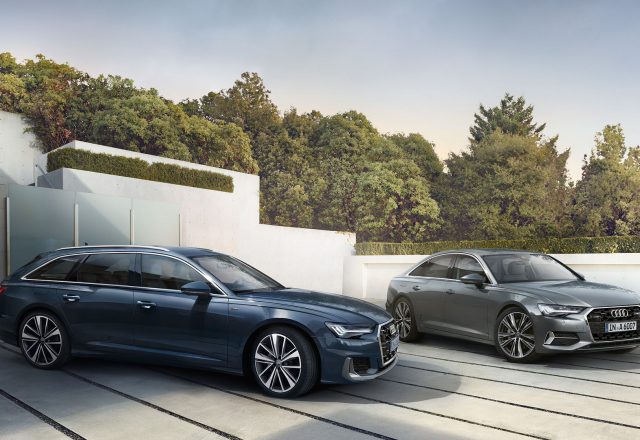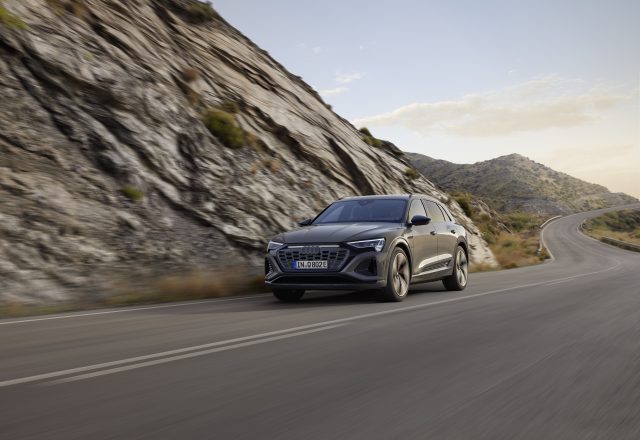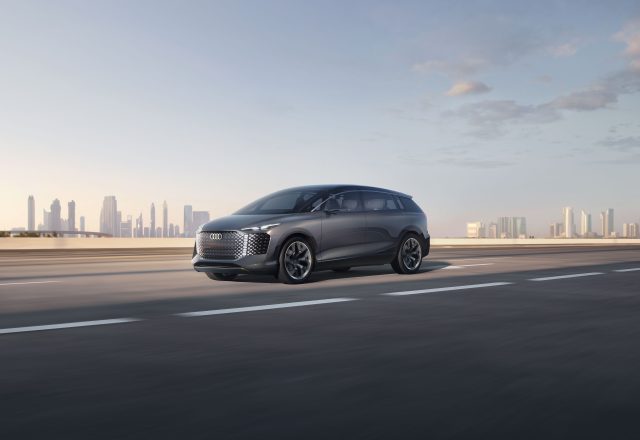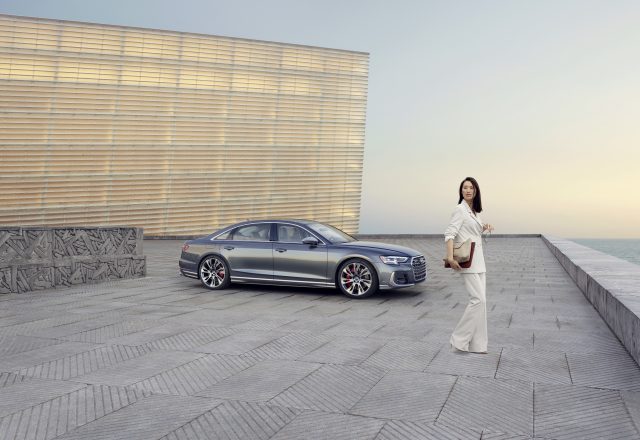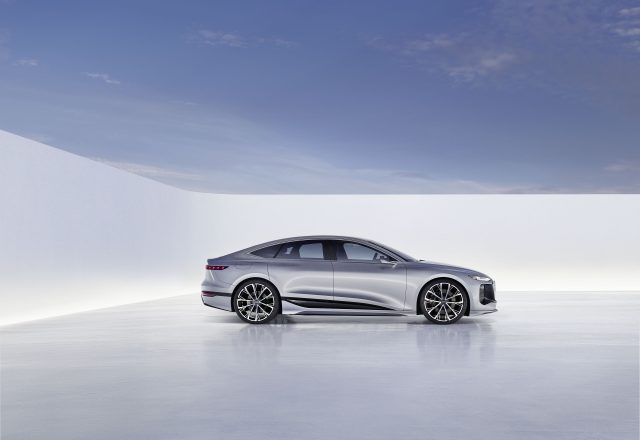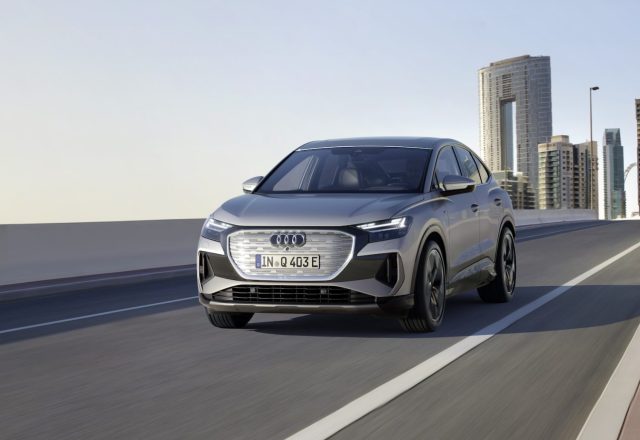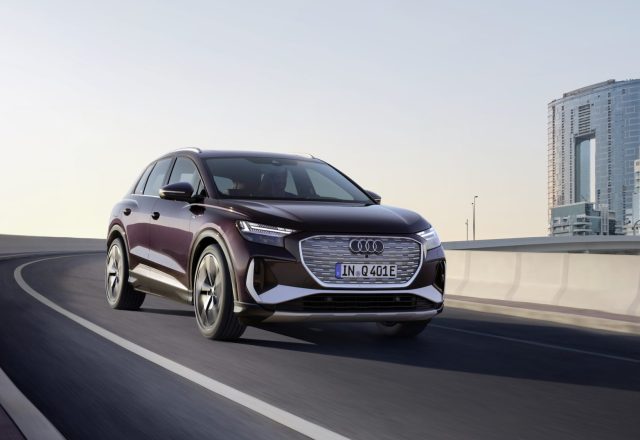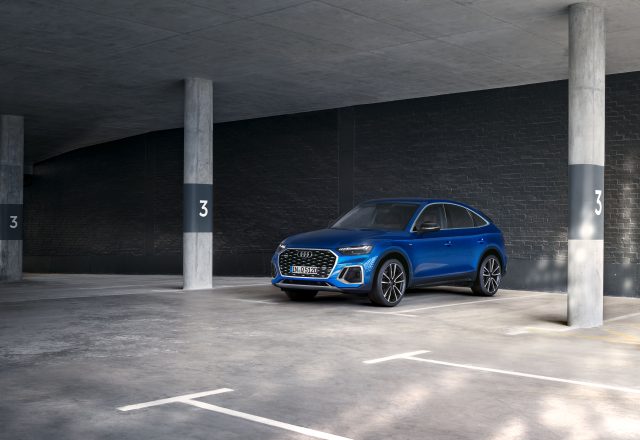Audi is in the middle of its transformation into a provider of premium electric mobility: With the new Audi Q6 e-tron, the manufacturer is now launching its first product line based on the Premium Platform Electric (PPE). For those who travel often for their work, it offers advantages such as its outstanding electric performance, progressive design and digital interior. Go.
The new
Audi Q6 e-tron
Fuel type:
Electric
Range:
up to 625 km1) 2)
Luggage capacity:
up to 1.529 litres
(with rear seats folded)
The Premium Platform Electric (PPE for short), developed jointly with Porsche, and the E3 1.2 electronics architecture (see also the box further below) are important milestones in the expansion of Audi’s range of electric models. They mark the start of a comprehensive strengthening and rejuvenation of the model portfolio – and enable Audi to take the next step on its journey towards becoming a provider of premium electric mobility: The new Q6 e-tron also underpins its promise to offer electric vehicles in all core segments by 2027. What does the fully electric SUV have to offer as a company car? Here’s a brief introduction.
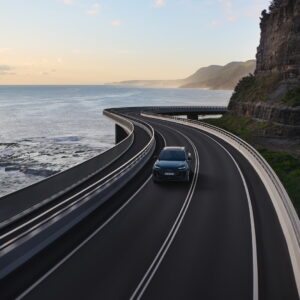

Drive far and charge quickly
For people who travel by car for their job, mileage remains the top priority, followed by charging speed. With the new Q6 e-tron, Audi now has a high-performance electric SUV in its portfolio that impresses across the board.
What does Premium Platform Electric (PPE) mean?
This term refers to a technology platform for electric vehicles. Electric vehicles based on the PPE offer an attractive overall experience of emotional design, sporty driving dynamics, ranges suitable for everyday use and short charging times. The offering is rounded out by cutting-edge technologies in the area of connection and digitalisation. The Audi Q6 e-tron is the first of the brand’s vehicles to utilise the newly developed Premium Platform Electric (PPE) – and takes electric mobility at Audi to a new level.
The vehicle’s compact and highly efficient electric engines and a newly developed lithium-ion battery – comprising 12 modules and 180 prismatic cells with a total gross capacity of 100 kWh (94.9 kWh net) – enable a range of up to 625 km.¹⁾²⁾
Thanks to the 800-volt technology of the PPE and a maximum DC charging capacity of up to 285 kW²⁾³⁾ as standard, the Audi Q6 e-tron enables short charging stops (electricity consumption (combined): 19.6-16.5 kWh/100 km; CO₂ emissions (combined): 0 g/km; CO₂ class: A)⁴⁾. At High Power Charging (HPC) stations the high-voltage battery of the Audi Q6 SUV e-tron²⁾ can charge from 10 percent to 80 percent³⁾ in approx. 21 minutes²⁾. Recharging enough energy for up to 255²⁾ takes around 10 minutes⁴⁾.
Equipped with Plug & Charge⁵⁾, the vehicle authorises itself at compatible charging stations when the charging cable is plugged in and activates the charging process at the station. Billing is likewise completely automatic.
If a charging station operates with 400-volt technology, the Audi Q6 e-tron can enable bank charging (electricity consumption (combined): 19.6-16.5 kWh/100 km; CO₂ emissions (combined): 0 g/km; CO₂ class: A)⁴⁾. The 800‑volt battery is automatically divided into two batteries at equal voltage, which can then be charged in parallel with up to 135 kW. Depending on the state of charge, both halves of the battery are first equalised and then charged simultaneously. AC charging with up to 11 kW⁶⁾ is possible at standard home chargers.
An important component in increasing the efficiency and therefore the range of the Audi Q6 e‑tron is the recuperation system, with which energy can be recovered – both in overrun mode and when braking. Around 95 percent of all everyday braking processes can be handled by this system.
The Audi Q6 e‑tron recuperates at up to 220 kW (electricity consumption (combined): 19.6-16.5 kWh/100 km; CO₂ emissions (combined): 0 g/km; CO₂ class: A)⁴⁾. As such, the Q6 e-tron offers great performance – but it wouldn’t be an Audi if it didn’t also impress in terms of looks and functionality.
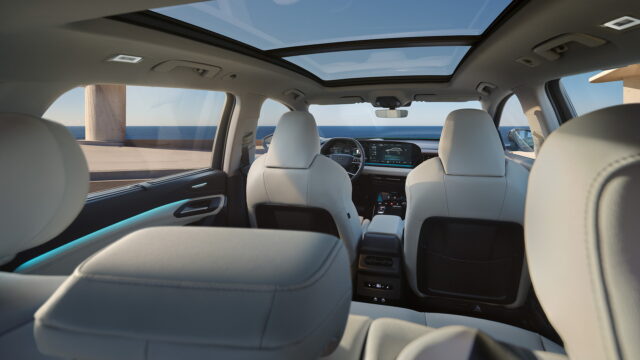
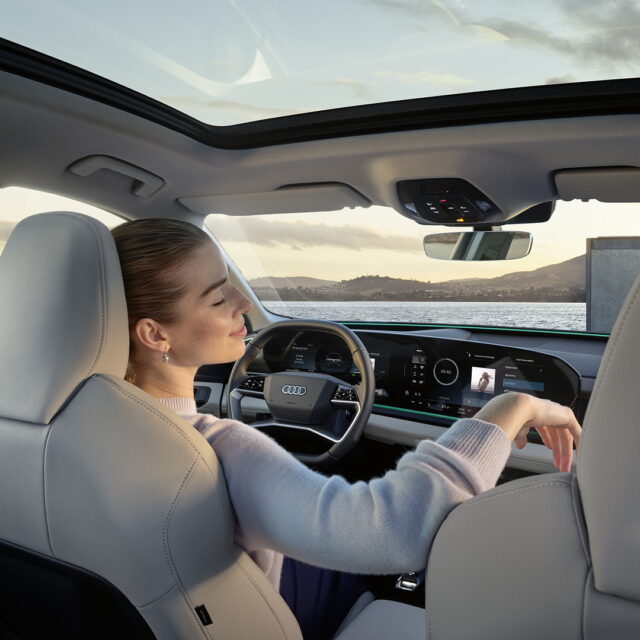

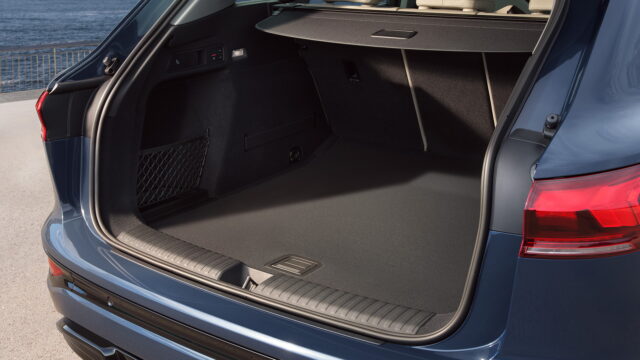
Good looks and flexible storage
What is meant by the abbreviation „E³ 1.2“?
The name E³ stands for End-to-End Electronics Architecture. During development, the overriding goal was to create a future-proof, standardised framework. The function-oriented architecture is based on a new domain computer structure with five high-performance computing platforms (HCP), which control all vehicle functions – from infotainment and driving functions through to semi-automated driving in later evolutionary stages.
The most powerful electronic architecture to date in terms of computing power is consistently geared towards customer requirements. One focus of development was on high-performance and secure networking of domain computers, control units, sensors, and actuators. In addition, the E³ 1.2 is characterised by a high-performance and seamless backend connection for Car-to-X swarm data applications and computationally intensive offboard functions. It will debut in the Audi Q6 e‑tron, is designed to be used across models, and forms the basis for future innovations.
The Audi Q6 e‑tron is positioned in the premium midsize segment. With a length of 4,771 millimetres, a width of 1,939 millimetres and a height of 1,648 millimetres, the SUV offers maximum space, comfort and suitability for everyday use. The wheelbase of 2,899 millimetres allows plenty of legroom in the second row of seats.
In the interior, the Q6 e-tron offers a lot of space and storage compartments. The boot offers up to 526 litres of storage space. This increases to up to 1,529 litres when the rear seats are folded down. The rear seats can be folded down separately (40:20:40). A further 64 litres of storage are available in the front boot under the bonnet – where things like smaller travel bags can be conveniently stowed.

World premiere in terms of lighting technology
With the Q6 e‑tron, Audi is not only starting a new chapter in electric mobility, but also in an important part of Audi’s DNA: lighting technology. It is introducing the active digital light signature: This form of light signature is made possible by a software module in one of the five domain computers of the Audi Q6 e‑tron (combined electricity consumption in kWh/100 km: 19.6 –16.5; CO2 emissions (combined) in g/km: 0; CO2 class: A)⁴⁾. In the case of the second-generation digital OLED tail light cluster, the six OLED panels with a total of 360 segments generate a new image every ten milliseconds using a specially developed algorithm.
With the second-generation digital OLED tail light cluster, the new Audi Q6 e‑tron (combined electricity consumption in kWh/100 km: 19.6 –16.5; CO2 emissions (combined) in g/km: 0; CO2 class: A)⁴⁾ takes lighting design, functionality and therefore road safety to a new level. In this way, the digital OLED tail light cluster can communicate with the vehicle’s surroundings in a targeted manner (Car‑to‑X). Audi has also taken the safety functions to a new level. The proximity detection system already known from other Audi models has been extended in the new Q6 e‑tron to include the communication light. It warns other road users of accident and breakdown sites. In addition to the regular tail light graphics, the communication light displays a specific static tail light signature with integrated warning symbols in the digital OLED combination rear light in critical driving or traffic situations.
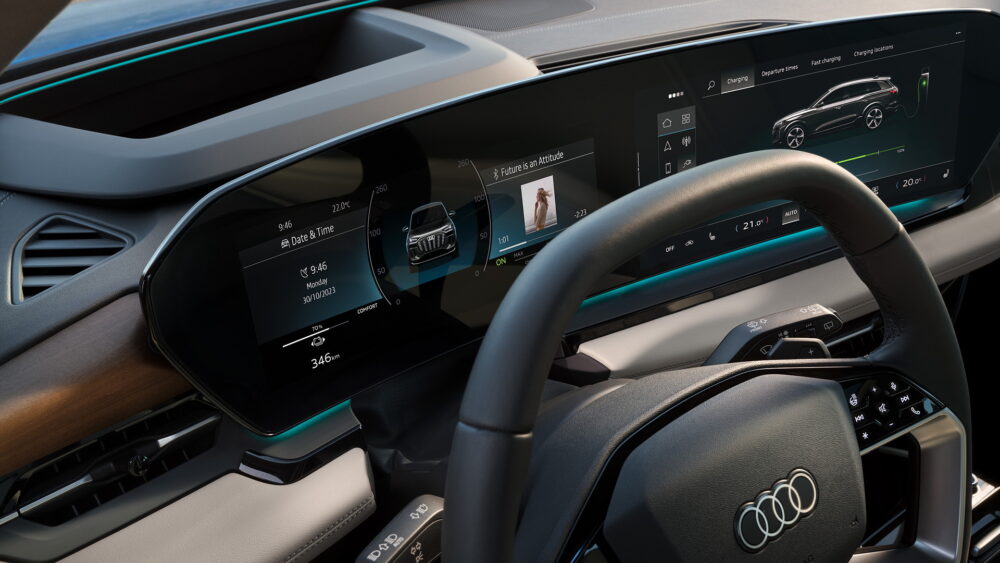
Digital Stage: new display and operating concept
The Audi Q6 e‑tron model series has a fully connected and digital interior based on the new E³ 1.2 electronic architecture. Made up by the Audi MMI panoramic display and the MMI passenger display, this Digital Stage is a key feature of the interior. The clearly grouped displays are perfectly integrated into the design concept and give the interior a generous and airy feeling of space. The slim, free-standing Audi MMI panoramic display has a curved design and OLED technology, and consists of the 30.2-cm (11.9-inch) Audi virtual cockpit and the 36.8-cm (14.5-inch) MMI touch display. The driver’s area is designed as a curve and the display with its concave shape is oriented towards the driver. The contours of the curved display are also reminiscent of the single frame typical of Audi.
The new Audi Q6 e-tron can be configured immediately.
All information applies to the German market. Availability and specifications may vary from country to country. Therefore, it is recommended to check with local sales representatives or dealers before final order. Vehicle images show special equipment.
¹⁾The range varies between 540 and 625 kilometres depending on the selected equipment for the vehicle.
²⁾The specified values only apply to the Audi Q6 SUV e-tron quattro: Electricity consumption (combined): 19.6-17.0 kWh/100 km; CO₂ emissions (combined): 0 g/km; CO₂ class: A.
³⁾The charging duration of the battery, the maximum DC charging capacity at HPC (High Power Charging) charging columns and charged range were determined according to DIN 70080, and can vary depending on different factors, for example: the environmental temperature and the temperature of the battery; the use of other country-specific plugs; the use of the preconditioning function (e.g. remote vehicle air conditioning); the available power at the charging column; the charge level; and the age of the battery. The charging capacity decreases as the charge level increases. Charge losses are taken into account.
⁴⁾The specified fuel consumption, electricity consumption, CO₂ emissions and electric ranges have been determined according to the measurement procedures of the “Worldwide Harmonized Light Vehicles Test Procedure” (WLTP) in line with Regulation (EC) No. 715/2007. Additional equipment and accessories (add-on parts, different tyre formats, etc.) may change the relevant vehicle parameters, such as weight, rolling resistance and aerodynamics, and, in conjunction with weather and traffic conditions and individual driving style, may affect fuel consumption, electrical power consumption, CO₂ emissions and the performance figures for the vehicle. Further information about WLTP can be found at www.audi.de/wltp.
⁵⁾An existing contract with Audi is required for the initial activation. Then the service can be activated in the myAudi app and the associated electronic Plug & Charge certificate for using the service is transmitted “over the air” to the selected Plug & Charge-capable vehicle.
Like Audi charging, the service for the use of the Plug & Charge function is available in Europe in Austria, Belgium, Bulgaria, Croatia, Cyprus, the Czech Republic, Denmark, Estonia, Finland, France, Germany, Great Britain, Greece, Hungary, Ireland, Italy, Latvia, Lithuania, Luxembourg, Malta, Netherlands, Norway, Poland, Romania, Slovakia, Slovenia, Spain, Sweden and Switzerland. For the time being, the service will only work in the European countries mentioned at charging stations with the Plug & Charge labelling of the IONITY network. The expansion with additional charging station operators (CPOs) will be country-specific. In the North American markets (NAR), the service is available to use the Plug & Charge function at charging stations operated by Electrify America with Plug & Charge labelling.
⁶⁾The charging capacity depends on the type of mains plug used, the country-specific voltage and the number of available phases of the mains supply, as well as the customer-specific domestic installation. It may therefore be lower in individual cases.
Status: 14.06.2024
© Audi

